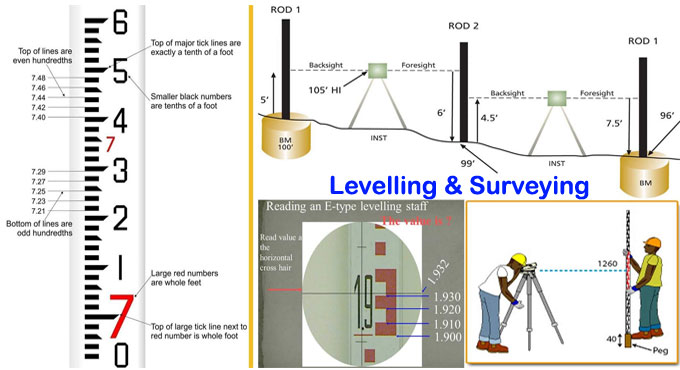NEWS | SOFTWARE | SHEET
Brief overview of Levelling in Surveying
Levelling is a part of surveying. Furthermore, levelling refers to the expertise of setting out as well as displaying the proportional elevations or heights of distinct points on the earth surface. Moreover, it is conducted for the subsequent objectives:
- In order to find out the elevations of specific points with respect to a specific or expected datum
- In order toset points at a specific or expected datum.
The initial one is vital to assist in designing the work while the other one is vital in managing the entire sorts of construction works. Moreover, levelling is appropriate for calculations within a vertical plane.
Level Surface: One level surface refers to a curved surface that is fixed at every point as well as is at right angle to the direction of gravity on that point. Such as for instance, a still water surface refers to an exactly flat surface. A surface similar to the base spheroidal surface of the earth is called as a level surface.
Level Line: It’s a line tangential to a plane surface at a certain point. Therefore, it’s, normal to the plumb line onall points.
Horizontal Plane: Horizontal plane through a point specifies a plane tangential to the plane surface at the point. Therefore, it’s at right angle to the plumb line through the point.
Horizontal Line: It specifies a direct line tangential to the plane at one point. Moreover, it’s even orthogonal to the plumb line.
Vertical Line: That line is normal to the level line on one point. Furthermore, it is usually considered as the line set along with a plumb line.
Datum: Datum refers to a surface to which elevation is utilized. Moreover, the mean sea level offers an appropriate datum throughout the world, as well as elevations are usually fixed as too much above or below sea level. It’s most adequate often to accept additional datum, particularly, in case just the comparative elevation of points is essential.
Elevation: The rise of a point on or near the earth surface refers to its upright span above or below a subjectively expected flat surface or datum.
Moreover, the dissimilarity in elevation amid 2 points refers to the upright distance amongst the 2 level surfaces whereupon the 2 points remain.
Vertical Angle: Vertical angle refers to an angle between2 intersecting lines within a vertical plane. Generally, one of those lines is horizontal.
Mean Sea Level: It refers to the average height of the sea to the entire phases of the tides. Furthermore, at a particular place it is received through doing average of the hourly tide heights throughout an extended period of time of nineteen years.
Bench Mark: It refers to a reasonably fixed reference point whose elevation with respect to certain expected datum is recognized. It’s used either as a beginning point for levelling or like a point whereupon to close like a check.
Techniques of Levelling: 3 basic techniques are utilized for determining the differences in elevation, which go from trigonometric leveling, barometric levelling, as well as spirit levelling.
To get more details, go through the following video tutorial.
Lecturer: OTENBuildingCourses
Download Levelling and Surveying in PDF


